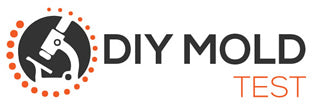
Why Seasonal Mold Checks Matter: Protect Your Home as the Weather Changes
As the seasons shift, so do the conditions inside your home. Whether you’re transitioning from winter’s cold and damp to spring’s warmth and humidity—or bracing for another round of winter storms—seasonal changes can create the perfect environment for mold growth.
Even if you’ve tested for mold before, your home’s conditions are always changing. Poor insulation, temperature fluctuations, and moisture buildup can create the perfect environment for mold to thrive. Gaps in insulation lead to drastic temperature shifts, causing condensation that fuels mildew and mold growth. That’s why seasonal mold testing is a smart way to maintain a healthy indoor environment.
Below are the most common culprits for mold growth in your home:
1. Increased Moisture, Humidity & Poor Insulation Create Mold Hotspots
Winter snow, ice, and rain—or spring’s rising humidity—can lead to hidden moisture problems in your home. Even small leaks, condensation, or damp air can create the perfect environment for mold to thrive.
Another often-overlooked factor is poor insulation, which can cause drastic temperature fluctuations inside your home. When warm indoor air meets cold exterior walls—or vice versa—moisture forms, leading to mildew and mold growth in hidden areas like attics, basements, walls, and crawl spaces. These conditions can go unnoticed until mold becomes a bigger issue.
Warning signs of excess moisture or insulation issues:
-
Condensation on windows, walls, or ceilings
-
Cold drafts or uneven temperatures in different rooms
-
Musty smells in attics, basements, or behind walls
-
Higher energy bills due to inefficient heating and cooling
If your home experiences these conditions, seasonal mold testing can help identify problem areas before they worsen. Testing both surfaces and air quality ensures you catch mold growth early—whether it’s visible or circulating in your home’s air.
Common moisture-prone areas include:
-
Basements and crawl spaces
-
Attics and insulation
-
Bathrooms and under sinks
-
Window sills and door frames
-
HVAC units and air ducts
If left unchecked, mold can spread quickly and compromise both your home and your health. A simple solution? Our DIY Mold Test lets you easily check surfaces for mold and mycotoxins with lab-tested accuracy.
2. Stagnant Indoor Air Can Trap Mold Spores
During the colder months, homes are often sealed up tight to keep warm air inside. While this improves energy efficiency, it also reduces ventilation, allowing moisture and airborne mold spores to accumulate.
If your home has been closed up all winter, it’s a good idea to test before the warmer months arrive. Stagnant air can allow mold to thrive in areas like:
-
HVAC systems that recirculate spores
-
Closets, storage rooms, and attics with poor airflow
-
Rooms with high humidity levels where mold can grow undetected
An air test is the best way to detect airborne spores that may not be visible but still impact indoor air quality.
3. HVAC System Changes Can Spread Mold
As the seasons change, so do your heating and cooling needs. If you’re switching from heating to air conditioning (or vice versa), you may be unknowingly stirring up settled mold spores and distributing them throughout your home.
Warning signs your HVAC system may be spreading mold:
-
Musty smells when the heat or AC turns on
-
Visible mold on vents or air filters
-
Increased allergy symptoms indoors
Testing your home’s air can help identify mold spores before they become a bigger problem. Our best-selling Professional Air Test includes three air tests, lab fees, and a mold air pump—just like what the pros use.
4. Seasonal Allergies or Mold Exposure? Know the Difference
Many people assume that sneezing, congestion, or watery eyes in spring or fall are simply seasonal allergies. However, mold spores can cause similar symptoms—especially if you feel worse inside your home than outdoors.
Common mold-related symptoms include:
-
Persistent coughing or wheezing
-
Sinus congestion or sore throat
-
Itchy, watery eyes
-
Unexplained fatigue or headaches
If you’re experiencing these symptoms and suspect mold might be the culprit, testing your home’s surfaces and air quality can provide clarity.
5. Spring Cleaning Can Reveal Hidden Mold
Spring is the season of deep cleaning, decluttering, and home refreshes. But while scrubbing down your home, you might uncover musty odors, discolored walls, or water-damaged areas—all potential signs of hidden mold.
If you notice any of the following while cleaning, it’s time to test:
-
A persistent musty or earthy smell
-
Dark spots on walls, ceilings, or floors
-
Warped wood or bubbling paint
-
Water stains or previous leaks
Catching mold early can prevent it from spreading and help you avoid costly repairs down the road. A simple DIY Mold Test can give you peace of mind with lab-verified results.
How to Test for Mold & Protect Your Home Year-Round
Mold growth isn’t just a seasonal issue—it can develop and spread at any time, often unnoticed. Whether you suspect surface mold or want to check your indoor air quality, DIY mold testing provides a quick, cost-effective way to detect mold before it becomes a bigger problem.
There are two key ways to test for mold in your home:
-
Surface Mold Testing – Detects visible mold growth on walls, furniture, and other surfaces. Our DIY Mold Test uses strips to test for mildew and mold on hard surfaces. This method is ideal for bathrooms, kitchens, windowsills, and other moisture-prone areas.
-
Air Quality Testing – Identifies airborne mold spores that may not be visible but can still affect your indoor air quality. Our Professional Air Test, a pro-grade machine, allows unlimited home testing for airborne mold. For added convenience, we now offer refill cassettes on a monthly subscription.
With easy-to-use, professional-grade testing kits, you can stay ahead of mold risks and ensure a healthier home. Don’t wait for seasonal changes to expose hidden issues—take action now and get peace of mind knowing your home is mold-free.
Leave a comment
Comments will be approved before showing up.



